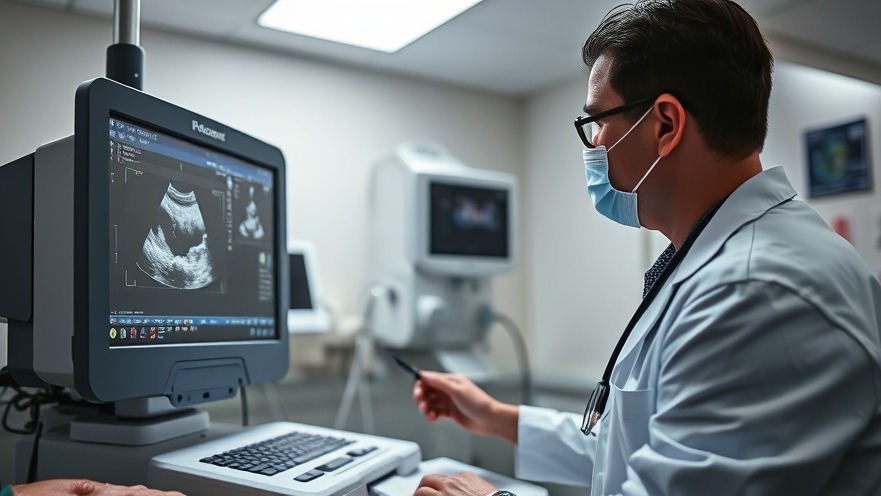
Why Point-of-Care Ultrasound Is Essential in Emergency Triage
In an era where every minute counts in emergency medical situations, Point-of-Care Ultrasound (POCUS) is carving a niche for itself as a transformative tool within emergency departments. With rapid imaging capabilities, POCUS can deliver immediate insights that are crucial for diagnosing conditions, thereby facilitating quicker treatment decisions. This innovation isn't just about technology; it’s about improving patient care and outcomes by bridging the gap between initial assessments and definitive care.
The Patient-Centric Approach of POCUS
Patient care is evolving to favor approaches that prioritize quick and effective diagnosis. POCUS epitomizes this shift, providing emergency room physicians the ability to perform diagnostic imaging at the bedside. A study published in the journal Academic Emergency Medicine indicated that the utilization of ultrasound led to significant reductions in time to diagnosis compared to traditional imaging methods. This swift approach aids in timely interventions which can be the difference between life and death.
Enhancing Triage Efficiency
Efficient triage can optimize workflow in crowded emergency settings. POCUS allows physicians to make swift decisions regarding patient prioritization based on real-time results. By accurately identifying critical conditions—such as cardiac tamponade or significant abdominal trauma—POCUS can streamline the process and reduce unnecessary procedures or transfers. This increased efficiency not only benefits the medical staff by alleviating overwhelming patient loads but also substantially enhances the patient experience.
Addressing Concerns of Overuse
Despite its advantages, some detractors voice concerns regarding the misuse or over-reliance on POCUS. Critics argue that the ease of use may lead to unnecessary ultrasounds, potentially increasing costs and exposing patients to risk. However, embracing an educational framework that emphasizes appropriate use and interpretation can mitigate these concerns. Training medical professionals in correctly utilizing and interpreting POCUS ensures that its efficacy in reducing unnecessary interventions is maximized.
Future Directions: Integrating POCUS into Medical Education
The future of POCUS in emergency settings hinges on education. Integrating ultrasound training within medical curricula will foster a generation of physicians adept in leveraging this technology. As institutions progressively incorporate POCUS training into their programs, we can anticipate widespread proficiency that enhances patient care significantly. Moreover, research into its long-term healthcare impact, such as reductions in hospital stay lengths and costs, will be instrumental in justifying its broader adoption.
How You Can Advocate for POCUS
As a member of the suburban community aged 25-60, staying informed about medical advancements can empower you to advocate for quality healthcare in your locality. Reach out to your healthcare providers and inquire about their use of POCUS. Understanding the tools available during emergencies can provide peace of mind and foster greater engagement in your wellbeing. In discussions with friends and family, emphasizing the significance of innovative technologies like POCUS can support shifts towards improved healthcare policies.
Conclusion: Embracing Innovations for Optimal Health
In conclusion, Point-of-Care Ultrasound is not just a technological marvel; it is a vital advancement that every emergency department should adopt. As patients, understanding the benefits and mechanisms of such innovative practices empowers us in our healthcare journey. Demand for comprehensive patient care requires active involvement—so advocate for advancements like POCUS in your community.
 Add Row
Add Row  Add
Add 




Write A Comment